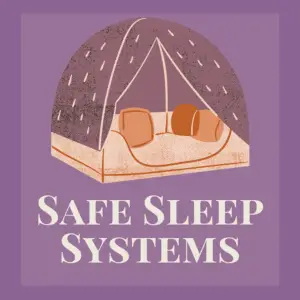This article is evidence-based, verified by Ashleigh Willis, a Neuroscience Ph.D. candidate.
Eye Movement Desensitization and Reprocessing (EMDR) is a relatively new alternative therapy. EMDR is a non-traditional type of interactive psychotherapy. The treatment has risen in popularity for the treatment of various disorders.
It’s often used to help veterans and people who have been in car accidents or subject or other types of trauma. EMDR therapy is widely used for conditions like post-traumatic stress disorder and anxiety. However, this type of treatment may benefit people with an autism spectrum disorder.
What is EMDR therapy?
EMDR therapy was developed in the 1990s. It was initially designed to treat traumatic memories. EMDR therapy might appear like a strange way to address mental health issues. It is similar to many ‘exposure’ therapies, where patients confront traumatic memories. But, instead of relying on discussion or medications, EMDR focuses on the rhythmic eye movements of patients.
The therapy combines methods from psychotherapy and exposure therapy. During EMDR therapy, the patient thinks about emotionally disturbing or traumatic experiences. While doing this, they direct their attention to an external stimulus. Most commonly, the external stimuli will be a therapist leading eye-movements back and forth with their fingers. However, external stimuli can also be hand-tapping or other auditory stimulation.
During therapy sessions, the patient will ‘relive’ traumatic experiences. Meanwhile, their eye movements are directed.
This process allows for traumatic memories to be accessed without causing excessive emotional stress. EMDR therapists believe that recalling trauma is easier while attention is directed elsewhere. Throughout the memory-recall process, patients are exposed to distressing memories. But there should be less of a negative psychological response.
EMDR therapists suggest that accessing memories in this way helps patients to form new perspectives on their minds. Over time, EMDR is supposed to relieve distress and anxiety, which are attached to disturbing memories.
What happens during EMDR therapy programs?
EMDR therapy programs are quite extensive. This is because accessing painful and traumatic memories can be dangerous if someone isn’t prepared. EMDR therapy is a long-term intervention. It may take a long time to see the results of the treatment. It’s also essential that patients are actively engaged throughout the entire process.
EMDR therapy includes eight stages:
Stage 1: History and Treatment Planning
It’s essential that EMDR is used with the right patients and under the right circumstances. EMDR therapy requires the patient to be able to cope with painful memories and are able to work through them. It’s vital that therapists check whether patients are ready to undertake the therapy.
In the first stage, therapists will get to know the patients . They’ll identify their crucial characteristics and issues. Therapists will also talk to patients about their trauma. Together they’ll decide which are the key targets that need to be addressed.
. They’ll identify their crucial characteristics and issues. Therapists will also talk to patients about their trauma. Together they’ll decide which are the key targets that need to be addressed.
Stage 2: Preparation
Therapists have to make sure the therapy is safe for the patient before beginning. EMDR therapists make sure their client has ways to cope with emotional stress. This might include teaching deep-breathing and mindfulness practices.
During this stage, patients will also be taught some of the theory and practices which EMDR is based on.
Stage 3: Assessment
The assessment stage takes a more in-depth look at the specific needs of the patient. During this part of the therapy, the therapist will identify the specific memories that they need to target. They’ll also find out about everything associated with the mind. For example, if there are any physical sensations that the memory stimulates.
Stage 4-7: Treatment (Desensitisation, Installation, Body Scan, and Closure)
Stages 4 to 7 of the therapy can be combined together as one ‘treatment phase’. EMDR treatments are highly structured. Each of the steps takes place in sequence over the course of the therapy.
The therapist will begin therapy sessions by using the EMDR technique to target specific memories. During these sessions, therapists will ask patients to focus on specific negative memory. During memory recall, the patient’s attention will be drawn toward an external stimulus like finger movements or hand tapping.
Details of precisely what therapy sessions involve can be found in the next section of this article.
Stage 8: Evaluation
The length of an EMDR therapy program will vary depending on the needs of a patient. Patients will be asked to evaluate their progress toward the end of the program. Therapists may also consult care-givers. The EMDR therapist will also assess the development of a patient.
program will vary depending on the needs of a patient. Patients will be asked to evaluate their progress toward the end of the program. Therapists may also consult care-givers. The EMDR therapist will also assess the development of a patient.
What does an EMDR treatment session look like? 👩⚕️
EMDR therapy sessions generally last between 60-90 minutes. During the meeting, the therapist will move their fingers horizontally in front of the patient’s face. The patient has to follow these movements with their eyes.
As the patient follows the movement, the EMDR therapist will start to ask the person to recall a distressing event. They ask questions about all aspects of the event. This will include visual and auditory detail. They will also ask about physical sensations that accompany the memory.
After this part of the therapy, the therapist will encourage the patient to let their mind go blank. During this period, some thoughts or feelings may arise to the patient. If these occur, the therapist will ask the person to identify what these are. The patient will then be guided to refocus on the negative memory or move on to another.
Throughout the session, the therapist will aid with any distress that is encountered. Over time, pain and disturbing feelings associated with traumatic memories should fade.
After recalling memories, the therapist will gradually guide the patient’s thoughts in a more positive direction. Before the end of the session, the views of the patient should have moved to more pleasant ones.
Instead of using their fingers, the therapist may choose to use hand-tapping or auditory tones for some types of patients.
Science or pseudoscience?
Before we go on to talk about the potential benefits of EMDR, it’s important to note that there is controversy surrounding this therapy.
While there has been a lot of scientific research on the therapy, much of this research is of a relatively low quality. This means scientists didn’t use the correct controls or measures to assess benefits. Further than that, there is a lot of pseudoscience which surrounds EMDR. Supporters of EMDR make claims about a vast amount of benefits. They also often claim that EMDR is better than traditional types of therapy. However, many studies and analyses have not supported these.
There’s no doubt that EMDR is beneficial for dealing with trauma. However, there is disagreement about whether EMDR is better than traditional ‘trauma-exposure’ therapies. Scientists have analyzed results across a number of studies. They found that EMDR was effective in treating PSTD and anxiety. However, they did not find it was any better than other exposure therapies. This means that the addition of finger movements may actually be unnecessary.
Psychologists have suggested that the results of EMDR may have more to do with therapist quality, rather than the therapy method. This may be why patients often report accelerated effects of EMDR therapy compared to other interventions they’ve tried.
EMDR has been surrounded by media attention. This has contributed to its popularity. However, it has also added to a lot of misinformation.
We’ll discuss some case studies and research which do support the benefits of EMDR. We’ve picked out the most robust findings of the scientific literature. However, it’s important to remember that there are some flaws in current scientific studies.
As with any new treatment, there is always a danger that the patient will have a bad experience. However, there are no studies that suggest extreme risks or adverse effects of the EMDR.
What are the benefits of EMDR for people with autism?
EMDR is primarily used for the treatment of trauma and anxiety-related disorders. However, the therapy may have benefits for people who have autism.
Clinicians often overlook trauma-related symptoms in people with autism. This is sometimes because the symptoms of trauma can be masked by those of autism. Symptoms such as avoidance, hyperarousal, and reduce cognitive ability are attributed to autism. However, these are also the hallmarks of stress reactions.
Sadly, studies suggest that symptoms of trauma are chronically undertreated in people with autism.
One study looked at the effectiveness of treating disturbing memories and anxiety with EMDR in children with autism. Many of these children had been bullied, had trouble with aggression control or extreme anxiety. In these case studies, an EMDR method using self-hand tapping was used.
The study showed that 12 out of 18 children showed significant improvements after the sessions. In some cases, only one meeting was required to see benefits in anxiety and aggression-related behaviors.
Adults with autism who had a history of adverse events were given an 8-week therapy program supplemented with EMDR. Researchers found that traditional therapies were more effective when supplemented with EMDR. In particular, adults showed reductions in post-traumatic and psychological stress. Other characteristic features of autism were also improved.
The findings have been replicated in case studies of adults with Asperger’s syndrome.
Unfortunately, there’s still a lack of scientific studies that look at the effects of EMDR therapies in different patient groups. More research is needed to understand the best way to deliver this type of treatment for people with autism.
From the research we do have, EMDR seems to be a beneficial treatment for those with autism. Depending on the individual, therapists may need to alter the external stimuli used. It’s also crucial that the person with autism is able to communicate distress and feels safe before starting the therapy.
How can EMDR help other mental health conditions? 👩⚕️
Research into the effects of EMDR on other mental health conditions has been much more extensive. Research suggests that the therapy may be useful in treating many types of conditions, including:
- Post-traumatic stress disorder (PSTD)
- Anxiety
- Panic attack
- Some sleep disorders

- Depression
- Eating disorders
- OCD

- Addictions
- Some types of trauma associated with psychiatric disorders such as schizophrenia
Biological effects of EMDR therapy
We don’t know much about how EMDR affects the brain on a biological level.
One study has shown a decrease in a region of the brain called the prefrontal cortex after EMDR. The prefrontal cortex handles ‘high level’ cognition. It underlies attention, decision making, emotions, and social behavior. Researchers showed decreased blood flow in this region after PSTD patients had EMDR therapy.
Changes in activity in this region may underlie the effects of EMDR. This reduction in activation may represent a more ‘balanced’ activity in the prefrontal cortex. This could benefit social and emotional behavior. Other studies looking at brain activity in police officers with PSTD have replicated these results.
with PSTD have replicated these results.
Several studies have shown that there are physical differences in the brains of people with PSTD. An area called the hippocampus, known as the ‘memory center’ of the brain, has been shown to reduce in size. A few scientists have suggested that EMDR therapies remedy this reduction in size.
However, they have only confirmed this on a small number of patients. Not all studies have been able to replicate this finding. None-the-less, this finding may give a fascinating insight into how the therapy might work on a biological level.
A study from 2018 showed that EMDR therapy might activate a brain network called the ‘default mode network.’ Default mode network activation is associated with a state called ‘flow.’ ‘Flow State’ was coined by psychologist Mihaly Csikszentmihalyi.
‘Flow’ is a mental state in which you become fully immersed in performing an activity with positive energy and focus. Mostly, every action thought or movement seems to flow naturally. Connecting thoughts will often feel effortless.
Neuroscientists define the neurological basis of this flow state as the ‘default mode network.’ There’s still debate around precisely which brain regions constitute this network. But, researchers agree that it’s a large scale. It also involves interactions between distinct brain regions, which are part of separate systems. These regions usually aren’t connected when the default mode is not activated.
Essentially, areas that don’t often communicate start talking. This often results in creative, abstract thought, and new connections. Ideas and concepts just seem to ‘click.’ This also produces a very calming and ‘meditative-like’ state.
If EMDR shifts the brain toward this type of ‘flow state’ it may mean that memories are more easily accessed. It also means new perceptions and insights can be found. The calming effect may also be beneficial when patients are dealing with traumatic memories.
The bottom line

EMDR therapy is an excellent method of treating trauma-related conditions. The research suggests that it is also safe for people with autism. Some patients may find EMDR benefits their current treatment or medication plan.
It’s important to remember that many studies suggest EMDR may simply offer the same benefits as traditional therapy methods. However, if you or a loved one would like to try it, there’s no research that suggests any extreme danger.
EMDR therapy is recognized by the World Health Organisation as a powerful way to heal traumatic memories.
If you’re looking for a therapist, it’s essential to make sure they have the right credentials.
All EMDR therapists must be mental health professionals. This includes psychologists, psychiatrists, and registered mental health nurses. In the UK and US, these professionals must have accredited qualifications from relevant professional bodies.
To become EMDR therapists, these professionals must undergo intensive training. More information about this training and EMDR in the UK can be found here: https://emdrassociation.org.uk/become-an-accredited-therapist/training/
In the US, the same restrictions apply to the types of professionals who can become an EMDR therapist. These professionals are also extensively trained in EMDR therapy, which is provided by the EMDR Institute. More information about finding an EMDR therapist in the USA can be found here: https://www.emdr.com/ .
.
How Can Dance Movement Therapy Help People With Autism? 🩰

Ashleigh Willis is a final year Ph.D. candidate in Neuroscience at the University of Glasgow. Her research investigates the genetic and environmental contributors to mental health and neurodevelopmental conditions. Ashleigh has built research collaborations with McGill University and received specialist training at the Centre for Neuroscience at Montreal General Hospital, McGill University Health Centre. She is also an active member of the Society for Neuroscience. Ashleigh holds an Honours in Psychology, an MRes in Neuroscience, and is fascinated by the neuronal circuits which make us who we are. Ashleigh is passionate about providing a deeper understanding of mental health conditions and sharing an accurate and de-stigmatizing message through talks for organizations such as TEDx, Pint of Science, and the Scottish Funding Council.
You can follow Ashleigh on her Youtube channel here
References
- https://www.sciencedirect.com/science/article/pii/S0272735899000173?via%3Dihub

- https://www.frontiersin.org/articles/10.3389/fnbeh.2014.00209/full

- https://www.sciencedirect.com/science/article/pii/S0168010209002673

- https://psycnet.apa.org/doiLanding?doi=10.1037%2F0022-006X.69.2.305

- https://link.springer.com/article/10.1007/s10803-018-3687-6

- https://www.sciencedirect.com/science/article/abs/pii/S0924933812744346

- https://neuro.psychiatryonline.org/doi/pdfplus/10.1176/jnp.2007.19.4.475

- https://neuro.psychiatryonline.org/doi/full/10.1176/jnp.17.4.526

- https://link.springer.com/article/10.1007%2Fs10803-018-3687-6

- https://www.ncbi.nlm.nih.gov/pubmed/26877093

- https://www.ncbi.nlm.nih.gov/pubmed/29928250

- https://www.frontiersin.org/articles/10.3389/fpsyg.2018.00923/full

- https://www.ncbi.nlm.nih.gov/pubmed/30215843

- https://www.ncbi.nlm.nih.gov/pubmed/28116752

- https://www.ncbi.nlm.nih.gov/pubmed/25932596

